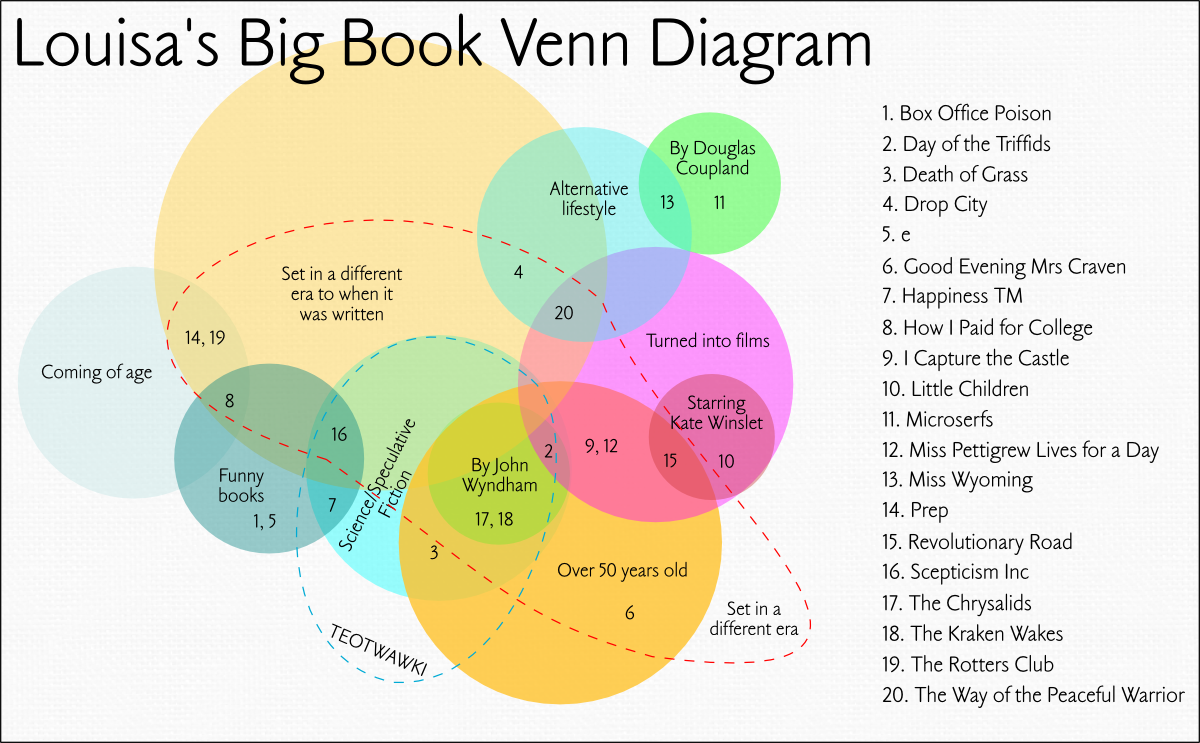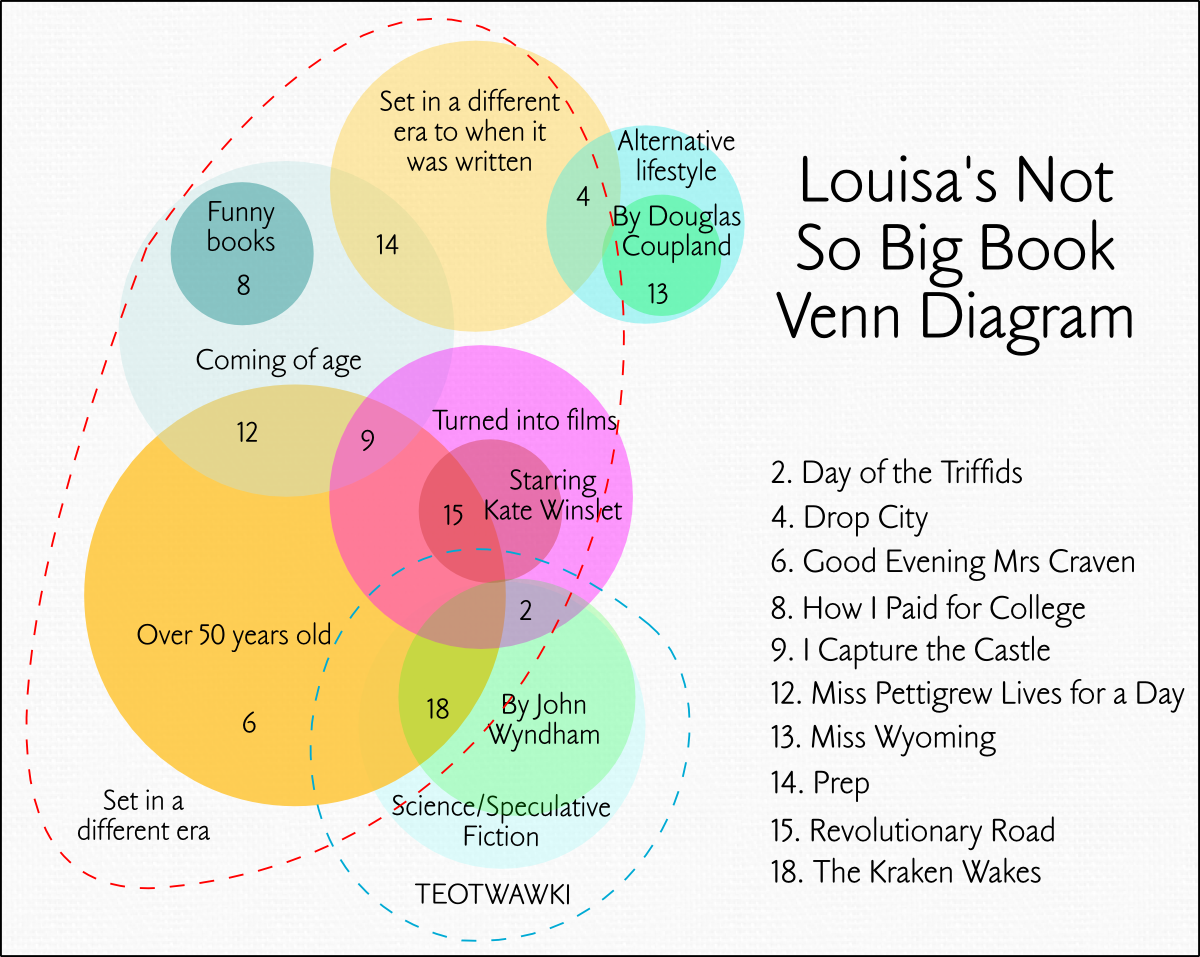A few times over the last couple of weeks I’ve referred to different books being on my “favourite books list” – but yesterday I realised I’ve never sat down and worked out said list so, frankly, anything could be on there.
As a result of that realisation, and in a bid to avoid doing anything actually useful, I decided to make the list of my top 20 favourite books yesterday afternoon. They’re not — by any means — the best 20 books ever written or the most important books to society in general, or anything like that. They’re just books that strike a chord or mean a lot to me for one reason or another, or frankly that I just enjoy and I (have and) will re-read every year or so. I wouldn’t even say it’s definitive as my choice in books depends heavily on mood and context but I can safely say these are books that I probably liked that afternoon, maybe.
(In alphabetical order. I missed out “the” on some of them, not sure why, but I’ll be blowed if I’m renumbering everything now.)
- Box Office Poison by Alex Robinson. The only graphic novel on the list – I have a lot of favourite comics but this one makes it onto this list because the characters felt developed enough for a novel.
- Day of the Triffids by John Wyndham. The first time I picked it up, I stopped on about page 5. The second time, I thought I was a frickin’ fool for putting it down the first time. When someone asked me my favourite book, my snap answer is usually Triffids.
- Death of Grass by John Christopher. Like Wyndham, apocalyptica always seems more real when it’s happening in the UK – and when it’s something as possible as a devastating plant virus. Also, Leeds gets nuked.
- Drop City by TC Boyle. This book hits all my book-buttons. Love it.
- e by Matt Beaumont. Not exactly a literary classic but I love the humour coming from the different points of view. Very fun.
- Good Evening Mrs Craven and other stories by Mollie Panter-Downes. There is no word for this book of short stories other than “delightful”. Really evocative of the era.
- Happiness ™ by Will Ferguson.
- How I Paid for College by Marc Acito. Reminds me of my own not-quire-so-crazy youth. My teenage years didn’t include fraud, blackmail and stealing a buddah but it evokes those heady days all the same.
- I Capture the Castle by Dodie Smith. It says in the intro to my book that Dodie read the whole book allowed to her partner to see if each sentence worked by itself – and you can tell. Really well crafted. I also love the characterisations of the animals ;)
- Little Children by Tom Perrotta.
- Microserfs by Douglas Coupland. Not something I re-read regularly nowadays but a book I used to finish reading then immediately start again. I found it randomly in Southport Library in early 1997 and it introduced me to the idea of geek culture. It inspired me to start my first website a few weeks later :)
- Miss Pettrigrew Lives for a Day by Winifred Watson. I felt so uplifted when I finished this book. Talk about carpe diem.
- Miss Wyoming by Douglas Coupland.
- Prep by Curtis Sittenfeld. I described it on The Really Good Life the other day as: “in a parallel universe somewhere, I am American, went to boarding school and Sittenfeld stole my teenage diary”. So much detail, so accurate neurosis!
- Revolutionary Road by Richard Yates.
- Scepticism Inc by Bo Fowler. I picked this up completely randomly when I very first moved to Leeds in 2000. An absolute gem of a find – really funny.
- The Chrysalids by John Wyndham.
- The Kraken Wakes by John Wyndham. Like Triffids, the first time I read it, I struggled with it. It’s pretty slow/long but it tells such a story – over nearly a couple of decades. Now I’d rate it as highly as Triffids.
- The Rotters Club by Jonathan Coe.
- The Way of the Peaceful Warrior by Dan Millman. Another I can barely read now because it’s so clunky but I read it regularly from about 13-19. I didn’t really get it then but like Microserfs, I think it put me on a path – or showed me the path I’d not realised I was already starting on.
After writing the list, in an effort to avoid doing even more chores, I decided to work out some stats: how many were 50+ years old, how many had been made into films, how many were in which specific genres/themes/styles. I read my numbers out to John and he demanded to know how many fit into multiple categories. A Venn Diagram was surely the answer – and a way to waste even more time! ;)

(There is one error with this one – I Capture the Castle should also be included in “coming of age” as well as “over 50 years old” and “turned into a film” – but even with a lot of shuffling, I couldn’t work out how to fit it in. It’s corrected in the simpler one below.)
Then, on the way to having a curry with the team last night, I was talking to John about the Big Book Venn Diagram and realised that some of the books on the “top 20” list were filler-ish – that I hadn’t had to refine my choices enough and that those “filler” were the ones that would be more likely to change (in fact they did, I made some substitutions during the drawing). So this morning, I cut it down to a “top 10” and drew a new Venn Diagram (although keeping all the same categories). Because it’s simpler, I also tried to make the circles more to scale. Apparently I like books set in other eras ;)

Now I should probably do something slightly more productive ;)


